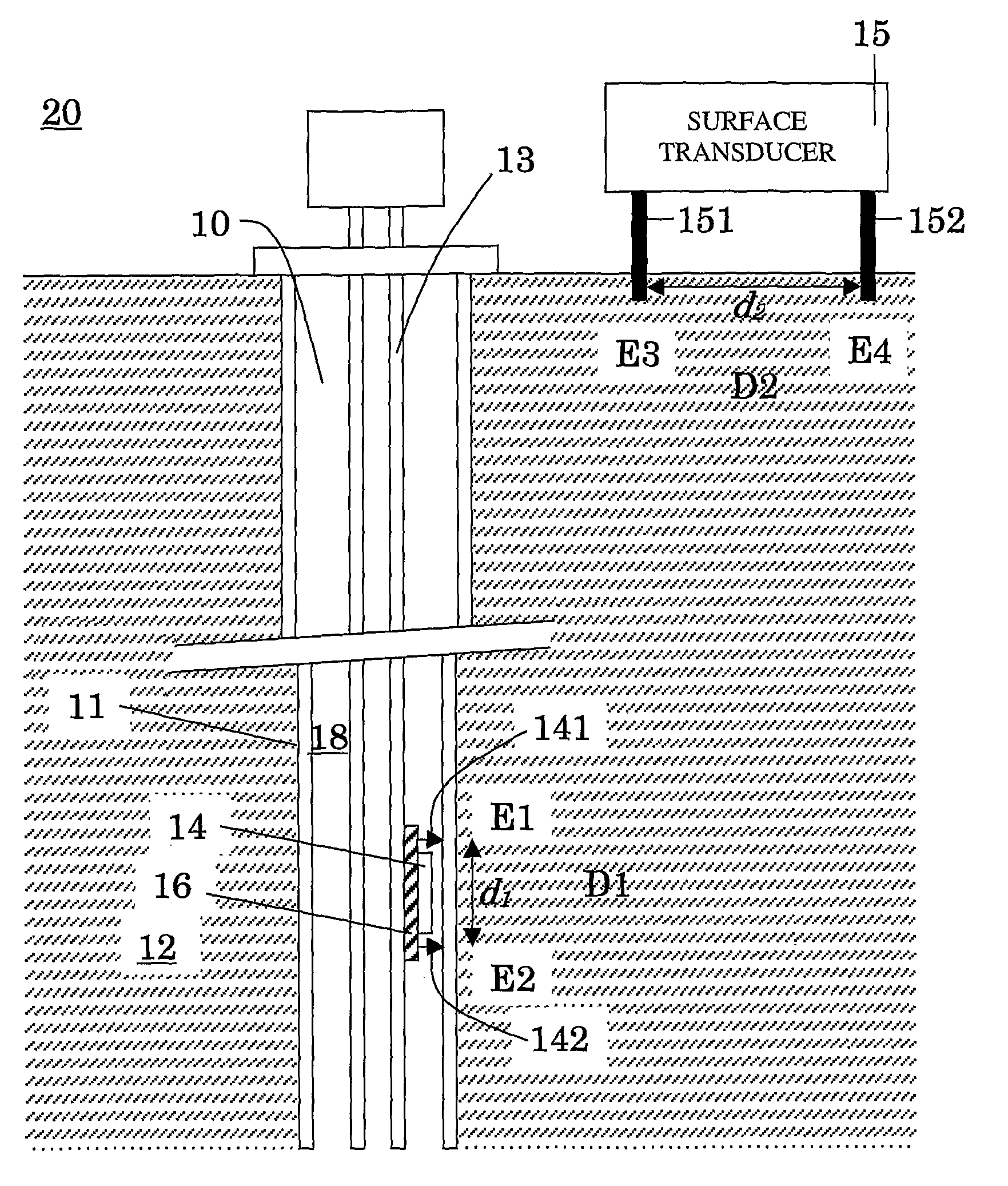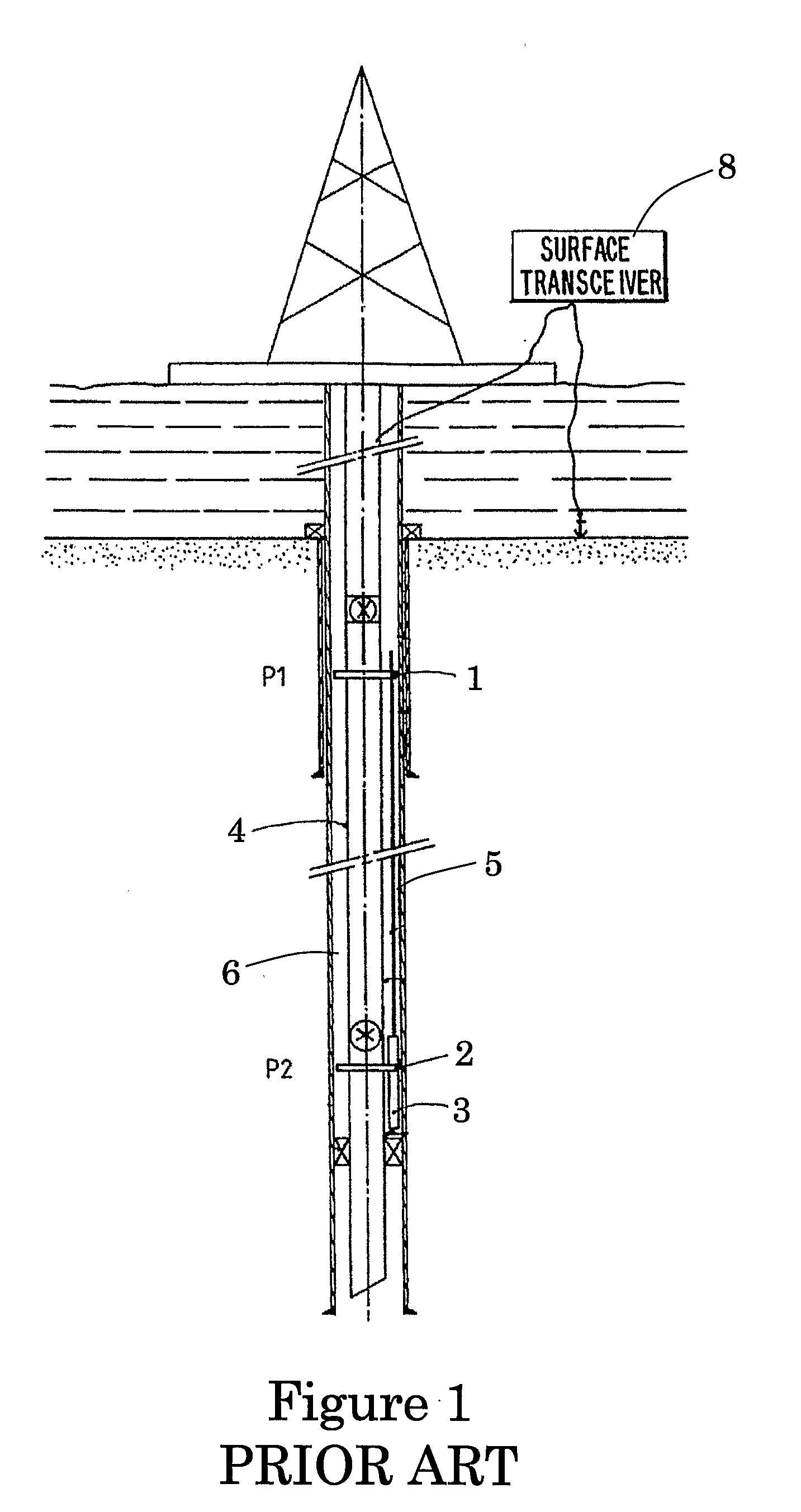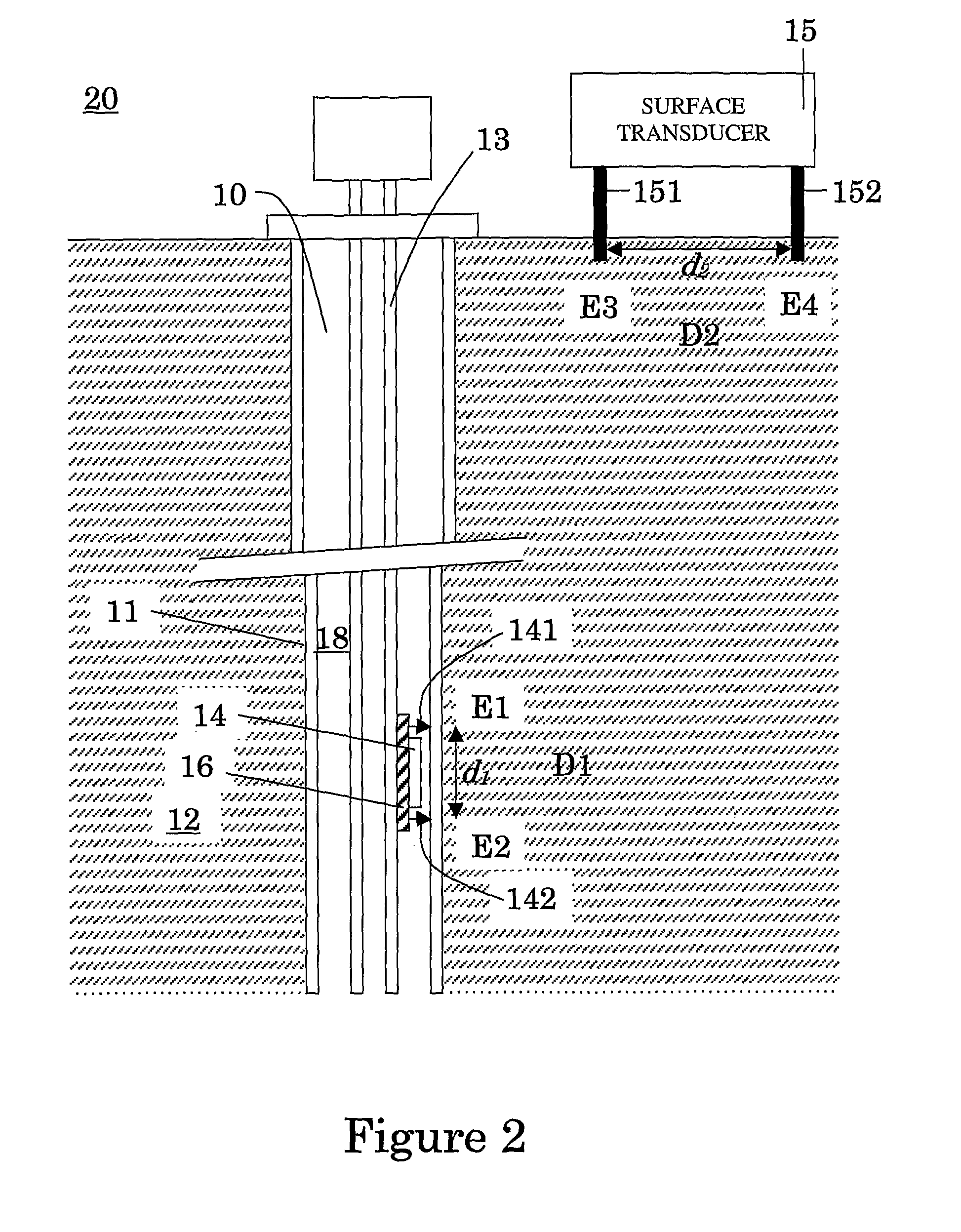Method and apparatus for transmitting or receiving information between a down-hole eqipment and surface
a technology of transmitting or receiving information and down-hole eqipment, which is applied in the direction of surveying, instruments, and wellbore/well accessories, can solve the problems of increasing the cost of the well, and increasing the reliability of such systems, so as to improve the efficiency of the receiving and/or transmitting method, the effect of increasing the signal to noise ratio
- Summary
- Abstract
- Description
- Claims
- Application Information
AI Technical Summary
Benefits of technology
Problems solved by technology
Method used
Image
Examples
Embodiment Construction
[0056]FIG. 2 is an illustration of the apparatus according to the present invention in a first embodiment. A first transducer 14, the well transducer, is installed in a well 10, the well comprising a tubing 13 and a casing 11 surrounding formation 12. An annular 18 is formed between the casing and the tubing, which is filled with an annular fluid. The casing and the tubing are conductive, normally made of steel. The well transducer has an upper electrode 141 which ensures contact with the casing at a pole E1 and an upon electrode 142 which also ensures contact with the casing at a pole E2. Preferably, the upper electrode 141 and / or the upon electrode 142 are / is insulated electrically from the tubing 13 with an insulator 16. Additionally, the upper electrode 141 and / or the upon electrode 142 are / is insulated against other conductive elements in the well, such as highly conductive annular fluids. The insulation allows to control the injected current between the electrodes 141 and 142 ...
PUM
 Login to View More
Login to View More Abstract
Description
Claims
Application Information
 Login to View More
Login to View More - R&D
- Intellectual Property
- Life Sciences
- Materials
- Tech Scout
- Unparalleled Data Quality
- Higher Quality Content
- 60% Fewer Hallucinations
Browse by: Latest US Patents, China's latest patents, Technical Efficacy Thesaurus, Application Domain, Technology Topic, Popular Technical Reports.
© 2025 PatSnap. All rights reserved.Legal|Privacy policy|Modern Slavery Act Transparency Statement|Sitemap|About US| Contact US: help@patsnap.com



